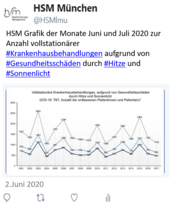Ambulatory Care-Sensitive Conditions in Germany: A Small Area Analysis (2006–2009)
| Authors/Editors: |
Augustin, Uta Naumann, Christoph Sundmacher, L. |
|---|---|
| Publication Date: | 2015 |
| Type of Publication: | Articles in Refereed Journals (National) |
| ISBN/ISSN: | 0941-3790 |
| erschienen in: | Das Gesundheitswesen |
| Weitere Quellenangabe: | Volume 77(04): e91-e105 |
Abstract
Purpose
The paper aims (1) to identify and depict cartographically ambulatory care-sensitive conditions in Germany (based on data for the years 2006–2009) and (2) to discuss the implications.
Method
The selection of ambulatory care-sensitive conditions (ACSC) was based on a literature review by Purdy et al. (2009) because a German catalogue of ACSC does not yet exist. Five of these indications were excluded due to limited data access or a low number of cases. Additionally, 2 diagnoses that are potentially relevant for Germany were included. Subsequently, diagnosis-specific hospitalisation rates were calculated for each of the 412 counties (Stadtkreise and Landkreise). The spatial distribution of 6 selected diagnoses (heart failure, diabetes, dehydration and gastroenteritis, ENT infections, influenza and pneumonia as well as schizophrenia) was depicted and discussed. Furthermore, an overall analysis of diagnoses analysis was performed.
Results
Based on the overall analysis, counties with high hospitalisation rates were identified in Mecklenburg-Western Pomerania, Saxony-Anhalt and Thuringia as well as to a lesser degree in Brandenburg, Saarland, Rhineland Palatinate and North Rhine-Westphalia (for men and women). Low hospitalisation rates were often present in counties in Baden-Wuerttemberg. Based on the diagnosis-specific analysis, some regional clusters could be identified. Thus, high hospitalisation rates for heart failure, diabetes, ENT infections were especially present in Eastern Germany. In contrast, there were no distribution patterns for high hospitalisation rates due to influenza and pneumonia. However, differences could be also identified between rural and urban regions: while hospitalisations due to dehydration and gastroenteritis were more often in rural districts, hospitalisations due to schizophrenia occurred more frequently in urban regions.
Conclusion
Knowledge of the spatial distribution of ACSC rates serves as an important indicator for the identification of districts where health-care quality and access (structural-related) can be optimised. The analysis of hospitalisation rates for 6 selected indications showed that for some indications there were clear regional differences in the distribution of ACSCs in Germany.





